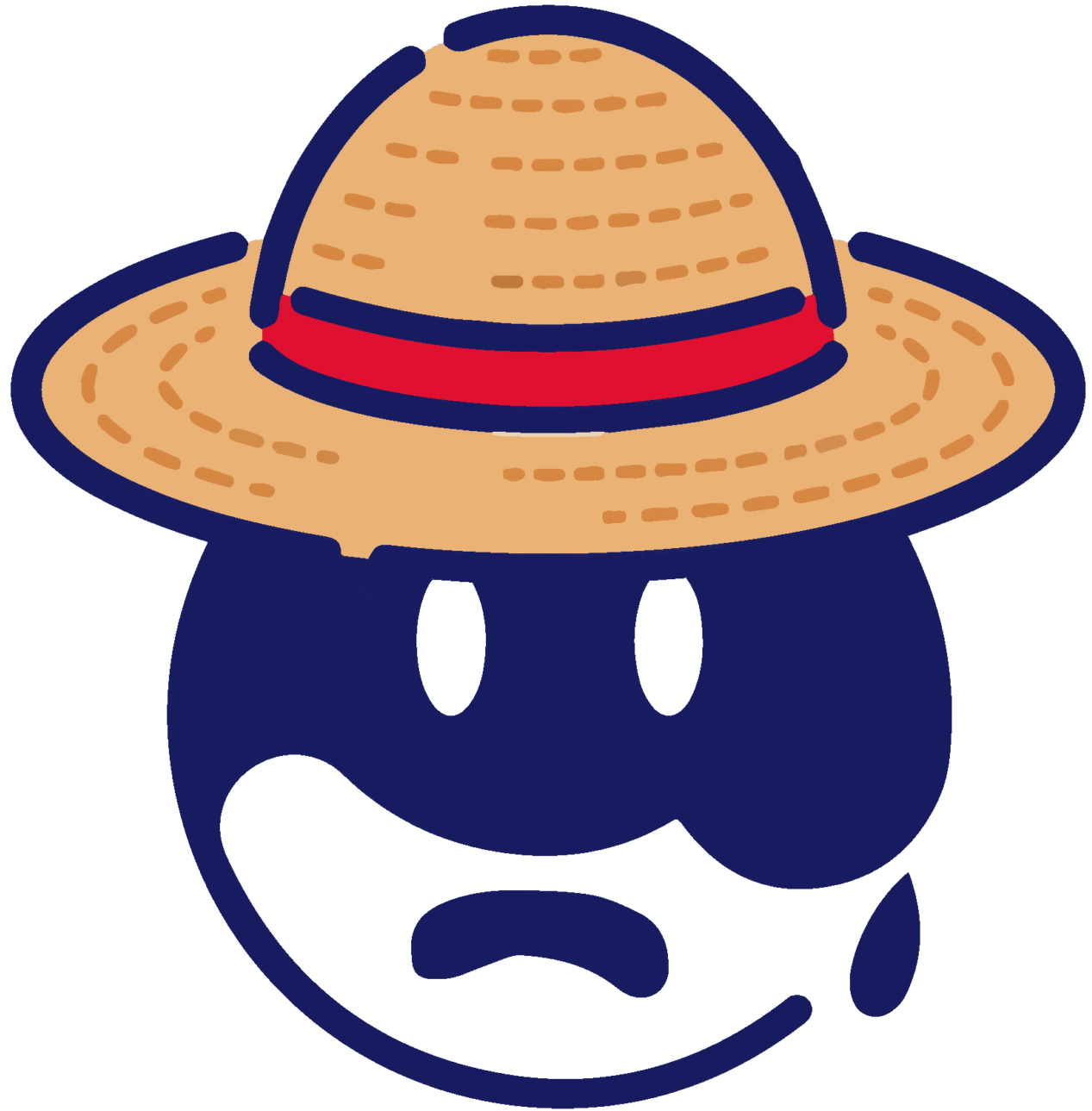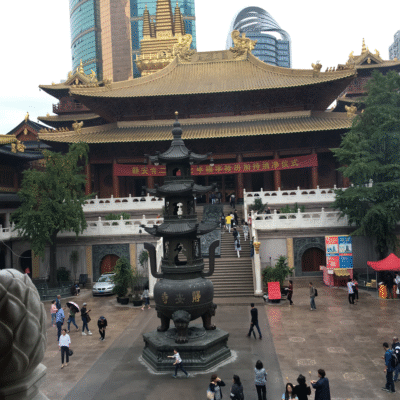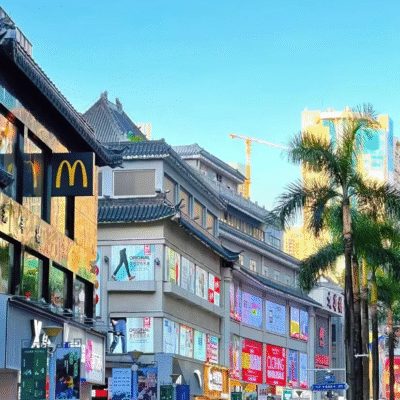For me, Chongqing is a city full of surprises. Standing atop the Yuzhong Peninsula, I was struck by the Yangtze and Jialing Rivers below, the light rail threading through buildings, and the mix of skyscrapers and ancient stone steps—a scene that blurred reality and imagination.
Chongqing is more than an online sensation; it is like a three-dimensional history book, with stories carved into every street.
This article introduces some of Chongqing’s famous “8D Magic City” sights and the local delicacies nearby.
The third trail of the mountain city
The Third Trail of Shancheng, located near Zhongxing Road in Yuzhong District, Chongqing, is a characteristic trail built between mountains and cliffs, also known as the “Ladder of Climbing Time”. The trail connects the city’s historical and modern landscapes throughout the entire process, including traditional stilt buildings from the Republic of China period, staff dormitory buildings from the 80s of the last century, and modern skyscrapers, forming a unique time-space superimposed landscape.

In the middle of the suspended plank road, there is an inconspicuous viewing platform. Standing here, you can see Chongqing in three eras at the same time:
Below is the traditional stilt building from the Republic of China period, in the middle is the staff dormitory building in the 80s of the last century, and in the distance is Raffles City Square that goes straight into the sky.

This kind of superimposed wonder of time and space is the most charming place in Chongqing.
Basic information on the third trail in the mountain city
| item | information |
|---|---|
| title | Mountain City Third Trail: Climbing the Ladder of Time |
| address | Next to No. 234 Zhongxing Road, Yuzhong District |
| Transportation routes | Rail transit: Line 1 exits from Exit 5 of Jiaochangkou Station, walk south along Zhongxing Road for about 8 minutes Bus: Take No. 0491 or 0492 to Zhongxing Road Station Taxi: Directly inform the driver of the “Entrance of the Third Trail of Shancheng” |
| fare | gratis |
| Opening hours | All day |
| Recommended tour time | 2-3 hours |
| feature | When most tourists rush to Hongya Cave, they can step on the third trail of the mountain city in the morning mist. This trail built on the cliff connects Chongqing’s past and present. |
It is recommended to come here before 6 o’clock in the morning, not only to avoid the crowds, but also to see the most authentic market life.
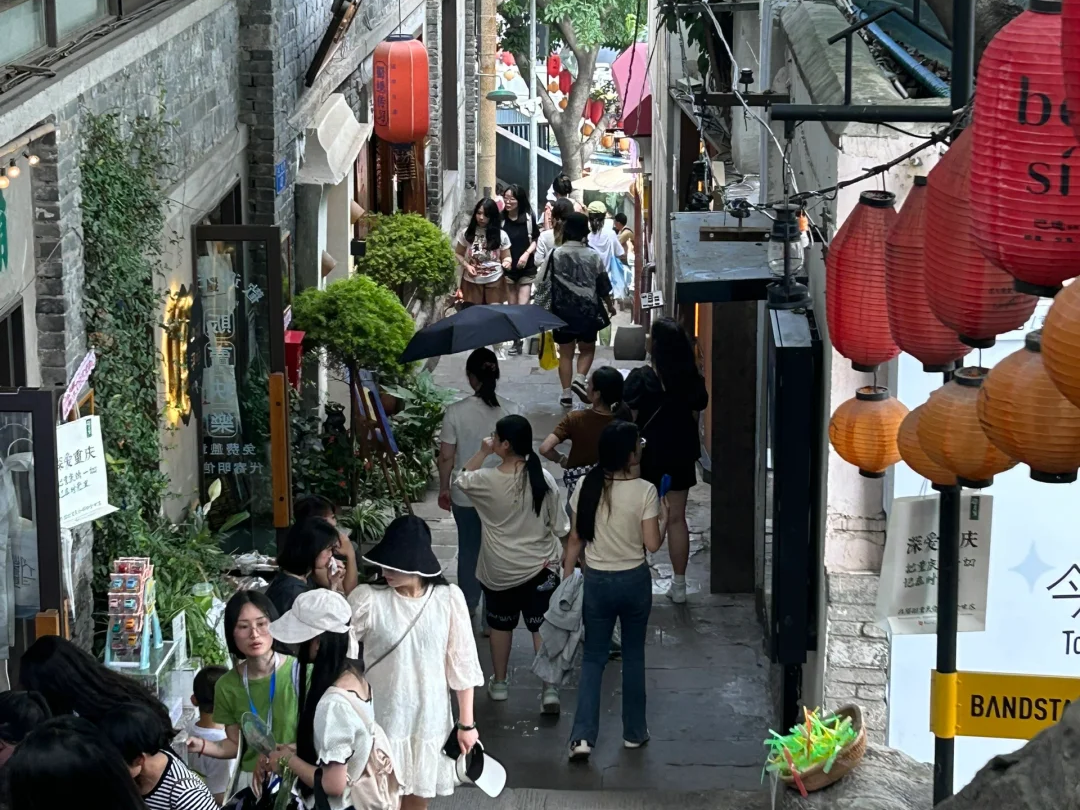
The old people were exercising on the trail in the morning, the vendors were carrying fresh vegetables up the mountain, and the whistle of the Yangtze River steamer could be heard in the distance.
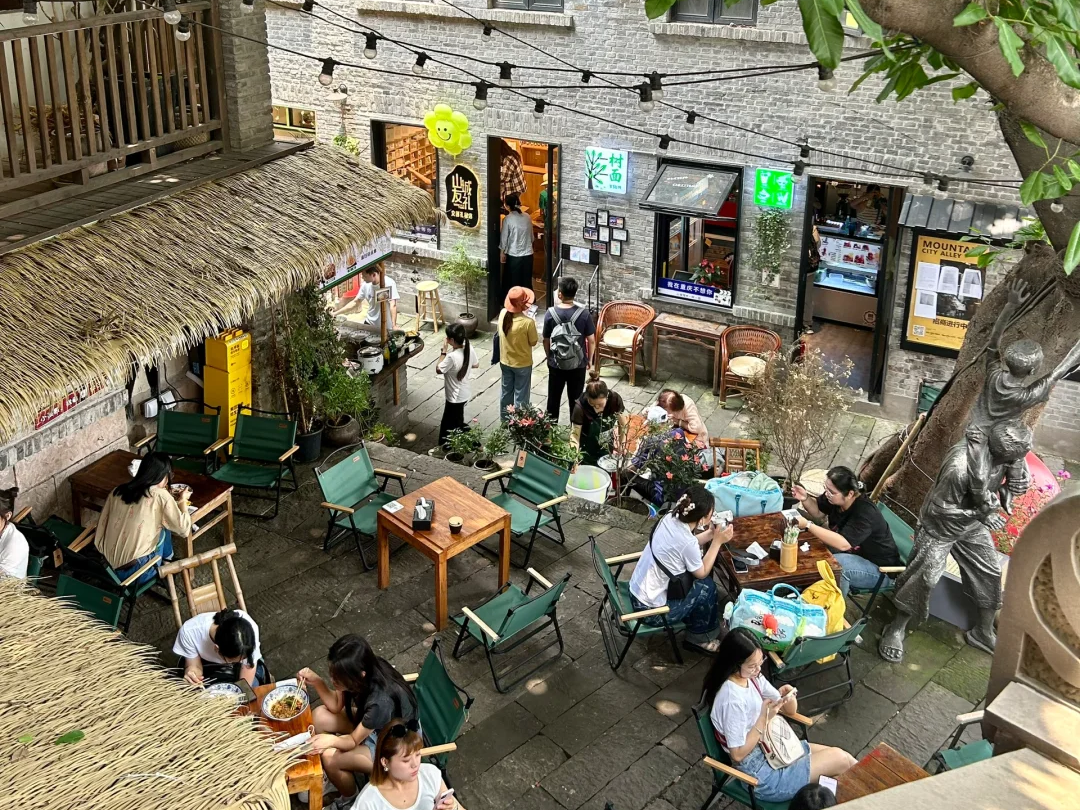
At this time, the entire mountain city seemed to have just woken up, showing its most authentic appearance.
Recommended food near the third trail of the mountain city
Step Old Hot Pot is located near the exit of the third trail in Shancheng, only about 300 meters away from the trail, with convenient transportation. This long-established restaurant is famous for its mellow butter pot base and is frequented by locals, making it a great place to taste authentic Chongqing hot pot.

Recommended dishes include fresh tripe, freshly fried crispy pork, and brain flowers, all of which are delicious and flavorful. Whether you’re having a meal with friends or experiencing authentic cuisine, Step Old Hot Pot is a choice not to be missed, especially during dinner time, remember to line up in advance.
| item | information |
|---|---|
| Restaurant Name | Step Old hot pot (300 meters from the trail exit) |
| address | No. 12, South District Road, Yuzhong District, Chongqing, China Postal Code: 400010 |
| per capita consumption | 80 yuan |
| Recommended dishes | Fresh tripe (NT$38), freshly fried crispy pork (NT$28), brain flower (NT$15) |
| feature | An old shop at the end of the trail, the butter pot has a mellow base, and fresh tripe and freshly fried crispy meat are recommended. It is frequented by locals and often has a line at night. |
White elephant residence
White Elephant Residence, located near the center of Chongqing, is a leisure attraction that combines history, culture and natural landscapes. White Elephant House is famous for its simple architectural style and quiet environment, retaining some of the traditional style of old Chongqing, allowing tourists to feel a sense of tranquility in the noisy city.
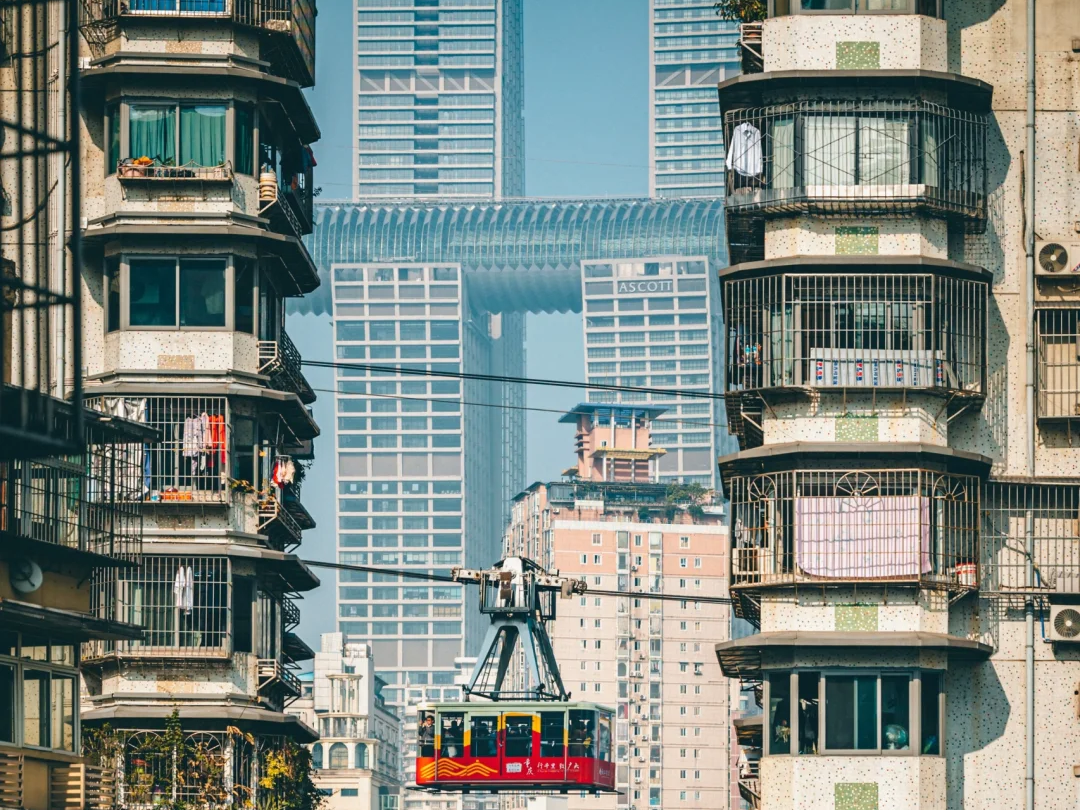
There are quaint courtyards, stone steps and paths in the scenic area, as well as the surrounding mountain city landscape.
| item | information |
|---|---|
| address | No. 1-6 Baixiang Street, Yuzhong District |
| Transportation routes | Rail transit: Exit 7 of Xiaoshizi Station on Line 1, walk 10 minutes along Baixiang Street Bus: Take No. 414 or No. 440 to Wanglongmen Station and walk: walk about 8 minutes from Changjiang Cableway North Station |
| fare | Free (residential area, please keep quiet) |
| Opening hours | All day |
This residential building, built in 1992, is the best textbook for understanding Chongqing’s magical terrain. I met Aunt Wang, who has lived here for thirty years, and she told me a secret: “Do you know why this building has 3 different exit floors?”

Because Chongqing is a mountain city, each floor can be the ground floor. ”
In-depth experience suggestion:
Don’t just come to take photos and check in. Sit quietly on the corridor of Building 3 for a while and observe the daily life of the residents: the old people play chess at the entrance of the corridor, the housewives cook in the public kitchen, and the children play in the patio. Every detail here tells the story of how the people of the mountain town adapt and take advantage of the wisdom of the special terrain.
The best time to visit is on weekday afternoons, when there are fewer tourists and you can see more real scenes of life. Remember to keep quiet, this is someone else’s home after all.
Recommended restaurants near White Elephant Residence
As a tourist, walking on the streets of White Elephant Residence, I felt not only the three-dimensional charm of the mountain city, but also the strong atmosphere of life. The residential buildings, patios and alleys along the way seem to tell me the story of the city.
Every time I get tired of walking, I will randomly pick a nearby restaurant, order a bowl of steaming pea noodles, listen to the laughter of children on the street, and feel the most authentic side of the city. For me, White Elephant Residence is not only a tourist attraction, but also a place where you can experience and feel the life of a mountain city.
After visiting the White Elephant Residence, if you are tired or hungry, you might as well stop and taste the nearby food. Let’s see what restaurants are worth trying!
| Restaurant Name | address | per capita consumption | business hours | Recommended dishes | feature |
|---|---|---|---|---|---|
| White Elephant Noodle Village | It is on the ground floor of Building 2 of White Elephant Residence | 15 yuan | 6:00-14:00 | Pea noodles (NT$12), Beef noodles (NT$16) | An old noodle shop that has been open for more than 20 years, the pea noodle seasoning ratio is perfect, and it sells out every morning |
| Yang Jilong Mansion | Yuzhong District Jiefang Monument Cangbai Road (500 meters away from White Elephant Residence) | 90 yuan | 11:00-22:00 | Signature fish (NT$68), bald commander cannabis balls (NT$28) | Chongqing authentic Sichuan cuisine restaurant, the dishes are authentic and the environment is comfortable |
White Elephant Noodle Village is located on the ground floor of Building 2 of White Elephant Residence and is an old noodle restaurant that has been open for more than 20 years. The restaurant is famous for its pea noodles, which sell out quickly every morning. Beef noodles are also a popular choice, with prices around 15 yuan per person.

The simple environment here allows visitors to experience the authentic taste of Chongqing’s home-cooked food, making it a great place to quickly savor a traditional breakfast or lunch.
Yang Jilong Mansion Yang Jilong Mansion
is about 500 meters away from the White Elephant Residence, located on Jiefang Monument Cangbai Road, Yuzhong District, and is an authentic Sichuan cuisine restaurant. The signature fish is a must-order dish, spicy and fragrant, and there are also special snacks such as bald commander hemp balls.
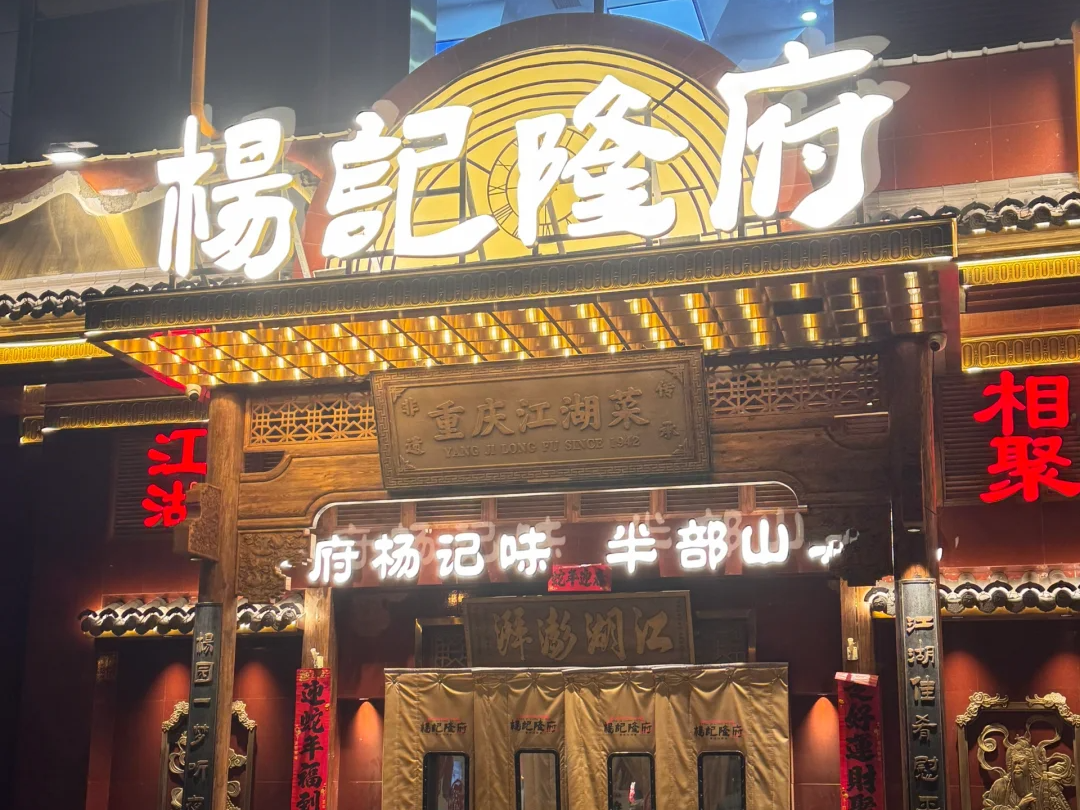
The restaurant has a comfortable environment, with an average consumption of around 90 yuan per person, making it perfect for family gatherings or sharing authentic Chongqing Sichuan cuisine with friends.
What is the food worth tasting in Chongqing?
Eating hot pot in Chongqing is far more than just satisfying your appetite, it is also a cultural experience. I recommend going to those old hot pot restaurants hidden in residential areas.
Dongting Hot Pot (Air Raid Shelter Store)
- Address: No. 1, No. 153, Zhongshan 3rd Road, Yuzhong District
- Transportation: 5 minutes walk from Exit 2 of Qixinggang Station of Rail Transit Line 1
- Per capita: 85 yuan
- Recommended dishes: fresh tripe, duck intestines, old meat slices
- Features: An old hot pot opened in an air-raid shelter, cool in summer and warm in winter. The tripe is fresh, and the more you cook it, the more fragrant it becomes, and it is a favorite among locals.
- Suggestion: Order a nine-square grid, each grid with different ingredients. Serve with a bowl of authentic oil sauce: sesame oil as a base, add garlic, coriander and a little vinegar. While eating hot pot, you might as well chat with the locals at the next table, and you will hear many interesting stories.
Going to Dongting Hot Pot is not only to taste authentic Chongqing hot pot, but also a cultural experience. It is located in an air-raid shelter, which is unique and makes people feel the unique spatial charm of Chongqing’s mountain city.

Order a nine-square grid to taste a variety of fresh ingredients, paired with authentic oil dishes, you can experience the layering and rich flavors of hot pot.
In addition, during the meal, you can communicate with the locals at the next table and hear many interesting stories about the city and life, giving you a deeper understanding of Chongqing’s city culture. In short, Dongting hot pot is not just a meal, but a dual enjoyment of taste and culture.
Pea noodles at the flower market
Flower Market Pea Noodles is a 30-year-old shop located on Minsheng Road in Yuzhong District, famous for its traditional Chongqing noodles. Although the store is small, it retains the most authentic handmade craftsmanship, with peas stewed softly, fragrant mixed sauce, and just the right proportion of seasonings.

At half past six in the morning, the chef’s skillful preparation process is smooth and pleasing to the eye. Sitting in the store, you can not only taste delicious pea noodles and beef noodles, but also feel the life of the old neighborhood, truly experiencing the morning ritual of Chongqing people. This is a breakfast destination loved by tourists and locals alike.
Lower City: The forgotten old Chongqing
The charm of Chongqing lies not only in the bustling Hongya Cave and the Liberation Monument, but also in the city’s hidden lower half. Most tourists only check in in the upper half of the city, while the lower half retains the most original and authentic urban appearance.

From Wanglongmen to Chaotianmen, stone steps, old buildings, and bamboo wall houses are intertwined, as if bringing people back to Chongqing in the last century. There is no hustle and bustle of Internet celebrities checking in here, only the most authentic breath of the city.
The exploration route
starts from the Huguang Guild Hall and slowly descends along the ancient stone steps, every step is like turning a page of history. Along the way, you’ll see:
- Former site of the Medicinal Materials Association: It was once an important place for traditional Chinese medicine trading, with quaint signboards and red brick courtyards reminiscent of the commercial atmosphere of the Republic of China.
- Bank of the Republic of China Building: The tall windows and heavy door leaves seem to still tell the prosperous years of the financial industry.
- Warehouses before liberation: carrying the historical memory of Chongqing as an inland trade hub.
Near Taiping Gate, you will also see some elderly people living in traditional bamboo wall houses, and their lifestyle has hardly been modernized. Sitting in front of the door, watching children running in the alleys, the elderly playing chess, and women picking vegetables, the whole neighborhood is like a living social history textbook.
It’s recommended to find
a local guide who can tell the story behind each building: this yard used to be a ticket number, and that doorway used to be a gathering place for dockworkers. As you walk slowly on the stone steps, you will feel how the peculiar terrain of Chongqing’s mountain city shapes urban life, and you can also understand the magical logic of “every floor is the ground floor”.
| item | information |
|---|---|
| Address of Huguang Guild Hall | No. 1, Bashoyuan, Changjiang Binjiang Road, Yuzhong District |
| traffic | Rail transit: 10 minutes walk from Exit 8 of Xiaoshizi Station on Line 1 Bus: Take No. 480 or No. 503 to Huguang Guild Hall Station |
| fare | 30 yuan |
| Opening hours | 9:00-17:00 (last admission at 16:30) |
| Nearby food | Rice rivers and lakes |
| Restaurant address | Yuzhong District Changjiang Binjiang Road (about 200 meters away from Huguang Guild Hall) |
| per capita consumption | 65 yuan |
| business hours | 11:00-21:00 |
| Recommended dishes | Bishan Overlord Rabbit (NT$58), Spicy Chicken (NT$68) |
| feature | In the antique Jianghu restaurant, the meat of Bishan Overlord Rabbit is tender, moderately spicy, and the spicy chicken is spicy and enjoyable. During dining, you can feel the atmosphere of life in the lower half of the city, with the historical sense of strolling and exploring, and the taste and cultural experience complement each other. |
Nan’an District: Chongqing from another perspective
Looking at the Yuzhong Peninsula from the south bank, you will find that Chongqing’s magical city feel is completely different from the perspective of the bustling city center. There is less hustle and bustle of tourists here, and more rhythm of river breeze, sunset and city life.
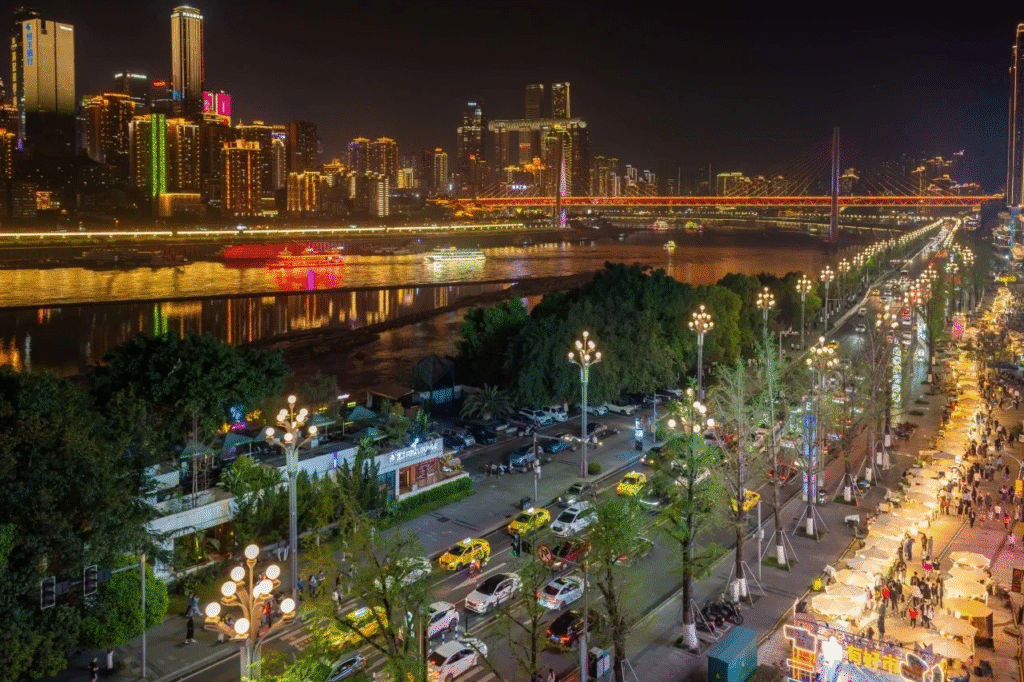
Two niche viewpoints are worth visiting: the abandoned observation deck next to Tsz Wan Temple and the nameless hillside of Huangpu Pass.
Exploration suggests
in the evening, bring some snacks and beer, find a comfortable spot, and wait quietly for the sun to set. As the buildings on the other side of the river gradually light up, the entire Yuzhong Peninsula seems to transform into a giant ship slowly setting sail. At this time, the city’s lines intertwine with light and shadow, presenting a completely different sense of urban magic.
Unlike the “One Tree” view of Nanshan, there is no crowd of tourists and the hustle and bustle of taking pictures, you can hear the sound of the river crashing on the shore and the wind blowing, and feel the most authentic breath of the city. It’s a static immersive experience – you’re not looking at the city, you’re breathing and empathizing with it.
Basic information about Tsz Wan Temple
| item | information |
|---|---|
| address | Lion Rock, South Bank District |
| Transportation routes | Rail transit: Get off at Tushan Station on the Ring Line, transfer to bus No. 373 to Ciyunsi Station Taxi: Take a taxi from Yuzhong District for about 15 minutes |
| fare | gratis |
| Opening hours | 8:00-17:30 |
Nearby food recommendation – Loquat Garden Hot Pot (Nanshan Main Store)
Loquat Garden Hot Pot, located on the Golden Highway in Nan’an District, is a mountain city restaurant known for its night view and spicy hot pot. Densely packed hot pot tables are lined up on the entire mountain, allowing you to not only taste the authentic Chongqing spicy flavors during meals, but also overlook the night view of the Chongqing Riverbank, enjoying a double feast for both the eyes and the taste.
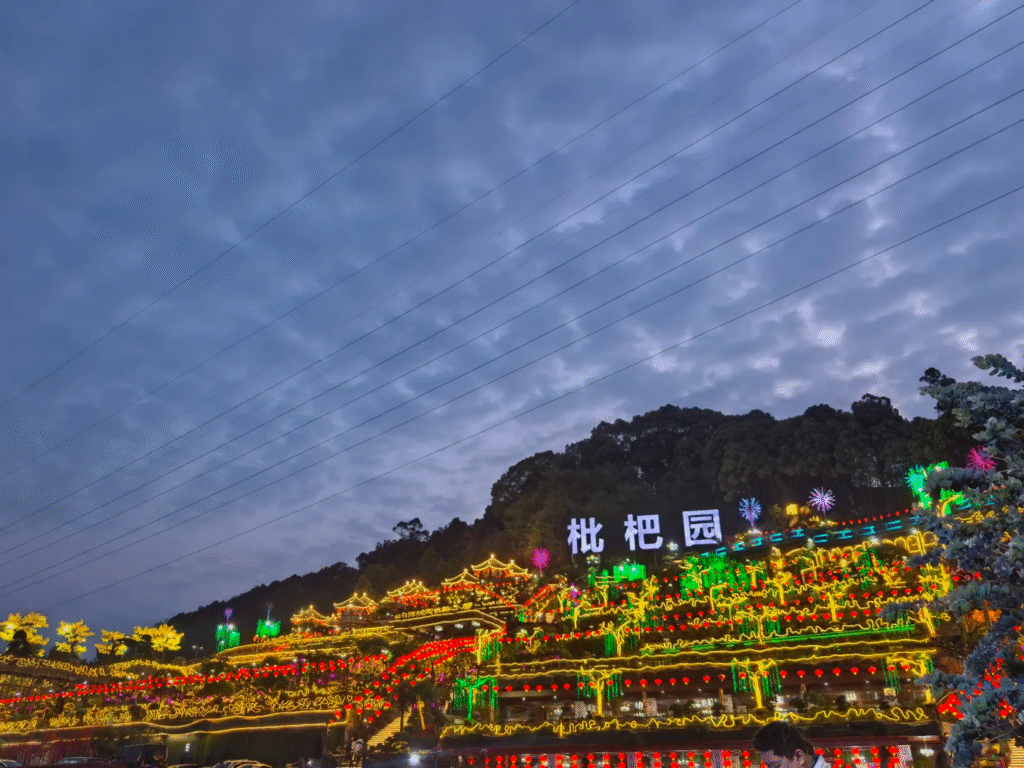
The hot pot soup base is spicy and rich, and the ingredients are fresh and rich, making it a popular choice for locals and tourists alike.
It is recommended to book a day in advance, especially in the evening or on weekends, to ensure the best river view seats.
| item | information |
|---|---|
| address | Golden Highway in Nan’an District |
| per capita | 100 yuan |
| business hours | 10:00-23:00 |
| feature | The whole mountain is a hot pot table, and the night view is invincible. During the meal, you can enjoy the night view of the Chongqing riverbank while tasting authentic spicy hot pot, satisfying your senses and taste at the same time. |
| Reservation phone | 023-12345678 (Reservations recommended one day in advance) |
Practical information
The best time to visit Chongqing is concentrated between March-May and September-November. In spring, the spring rain is continuous and the fog locks the mountain city, which is the most poetic; Autumn is crisp and visible, making it perfect for taking photos. It is recommended to avoid the scorching heat of July and August and the crowds during the Spring Festival.
If you want to experience life in Chongqing in depth, it is recommended to choose the old neighborhood in the lower half of the city or the south bank. Although the facilities are not as luxurious as the Liberation Monument, you can feel the most authentic mountain town life. For example, the Shancheng Lane Old Street Inn (No. 46, Shancheng Lane, Yuzhong District) is renovated from an old house, with a bed of 80 yuan/night and a standard room of 280 yuan/night. Or choose Nanbin Road Riverview B&B (Nanbin Road, Nan’an District), priced at 320-500 yuan/night, facing the Yuzhong Peninsula and having an excellent night view.
In terms of transportation, you can choose from the airport to the city Rail Transit Line 3 (about 50 minutes, 6 yuan), airport bus (15 yuan, about 40 minutes to Jiefang Monument), or taxi (about 60 yuan, 30 minutes). Transportation in the city includes rail transit (2-7 yuan one way), buses (1-2 yuan, support QR code payment), taxis (starting price 10 yuan, it is recommended to use Didi), and ferries (Chaotianmen-Danzishi, 5 yuan/person).
For the itinerary of the three-day in-depth tour, you can refer to the following: Day 1: Mountain City Third Trail (free) → White Elephant Residence (free) → Huguang Guild Hall (30 yuan) → Fan Jianghu (65 yuan) → Dongting Hot Pot (85 yuan); Day 2: Flower Market Pea Noodles (NT$16) → Tzu Wan Temple (free) → Huangpu Pass to see the night view→ Loquat Garden Hot Pot (NT$100); Day 3: Sichuan Academy of Fine Arts Huangjueping Campus (free) → Transportation Teahouse (8 yuan) → Zhongshu Pavilion (free) → night view of Nanbin Road.
Special reminder, Chongqing has a special terrain and many steps, so it is recommended to prepare a pair of comfortable shoes. It is also interesting to learn a few Chongqing dialects, such as “Bashi” (comfortable), “want” (good), and “not exist” (it doesn’t matter). Stay curious, the most beautiful scenery is often hidden around inconspicuous corners.
Conclusion
My most profound experience in Chongqing was not at a famous attraction, but on a rainy evening when I got lost in the White Elephant House. An old lady led me to her house, made a bowl of Tuo tea, and told me with a strong accent: “In Chongqing, it is normal to get lost. What matters is what you see in the process.”
The charm of Chongqing lies not in the check-in points, but in the process of exploration. Among the up and down steps, roundabout alleys and steaming hot pot restaurants, the true soul of the city is hidden. Put down the strategy and let yourself get lost. Let this 8D magical city take you on an adventure that intertwines time and space with its spicy aroma, hazy mist, and warm lighting. Every time you get lost, you may find new discoveries, and every corner may meet surprises. This is Chongqing – a city that can never be explored, a book that can never be finished.
